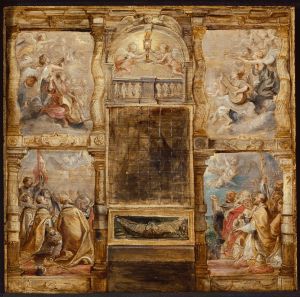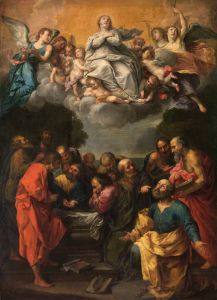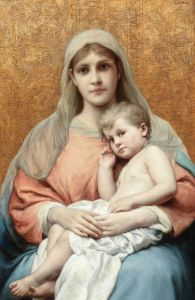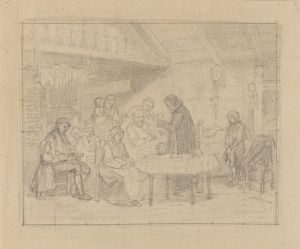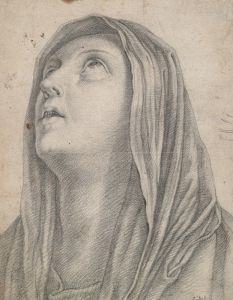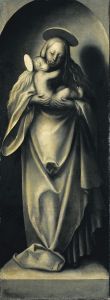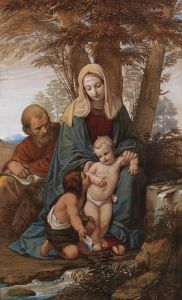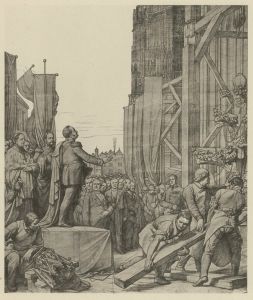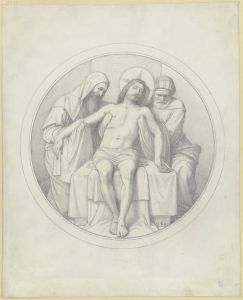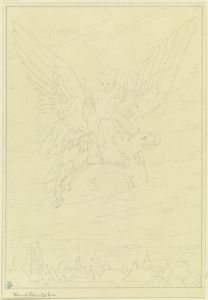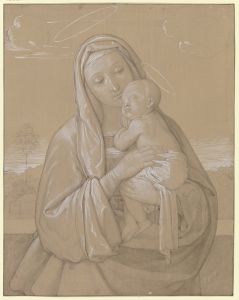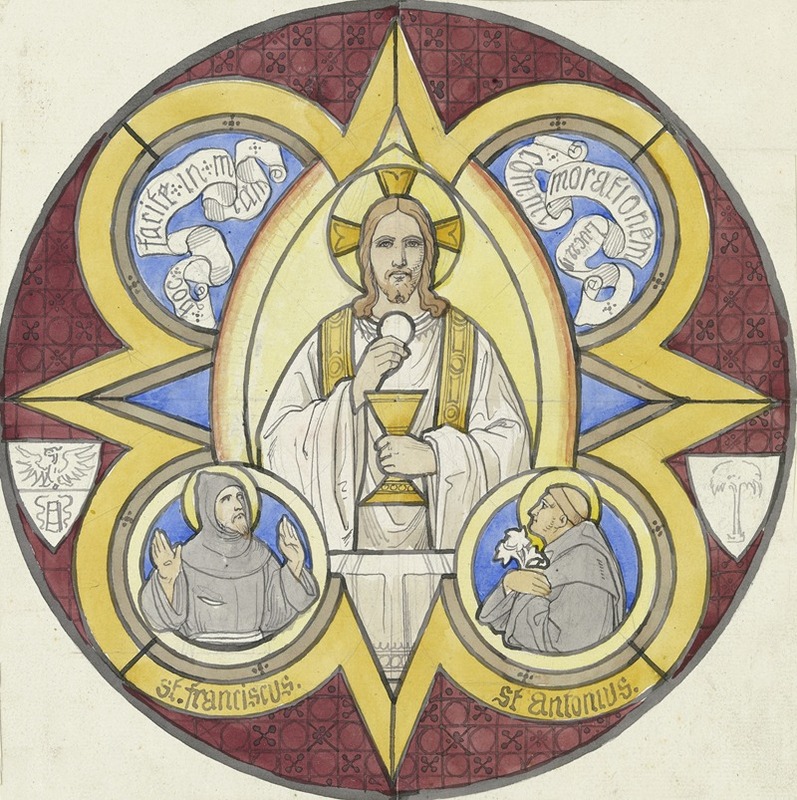
Christus mit Stola, Kelch und Hostie, daneben die Heiligen Franziskus und Antonius
A hand-painted replica of Eduard von Steinle’s masterpiece Christus mit Stola, Kelch und Hostie, daneben die Heiligen Franziskus und Antonius, meticulously crafted by professional artists to capture the true essence of the original. Each piece is created with museum-quality canvas and rare mineral pigments, carefully painted by experienced artists with delicate brushstrokes and rich, layered colors to perfectly recreate the texture of the original artwork. Unlike machine-printed reproductions, this hand-painted version brings the painting to life, infused with the artist’s emotions and skill in every stroke. Whether for personal collection or home decoration, it instantly elevates the artistic atmosphere of any space.
Eduard von Steinle was a prominent 19th-century German painter associated with the Nazarene movement, which sought to revive the honesty and spirituality of medieval and early Renaissance art. One of his notable works is "Christus mit Stola, Kelch und Hostie, daneben die Heiligen Franziskus und Antonius" (Christ with Stole, Chalice, and Host, with Saints Francis and Anthony).
This painting exemplifies Steinle's dedication to religious themes and his meticulous attention to detail. The central figure of Christ is depicted with a stole, a chalice, and a host, which are significant symbols in Christian iconography. The stole represents Christ's priestly authority, the chalice signifies the blood of Christ, and the host symbolizes the body of Christ, alluding to the Eucharist.
Flanking Christ are two important saints in the Christian tradition: Saint Francis of Assisi and Saint Anthony of Padua. Saint Francis, the founder of the Franciscan Order, is often depicted in religious art due to his profound influence on Christian spirituality and his emphasis on poverty, humility, and the love of all creation. Saint Anthony of Padua, a prominent Franciscan preacher and theologian, is venerated as the patron saint of lost items and is known for his powerful sermons and deep knowledge of scripture.
Steinle's painting is characterized by its serene and contemplative atmosphere, which is achieved through his use of soft lighting and harmonious color palette. The figures are rendered with a sense of reverence and devotion, reflecting the artist's own piety and commitment to his faith.
The composition of the painting is carefully balanced, with Christ at the center, drawing the viewer's focus, while the saints on either side create a sense of symmetry. This arrangement not only highlights the centrality of Christ in Christian belief but also underscores the importance of the saints as intercessors and models of holy living.
Eduard von Steinle's work is part of a broader movement in 19th-century art that sought to counteract the perceived materialism and secularism of the time by returning to religious and spiritual themes. The Nazarene movement, to which Steinle belonged, was particularly influential in this regard, advocating for a return to the purity and simplicity of early Christian and medieval art.
"Christus mit Stola, Kelch und Hostie, daneben die Heiligen Franziskus und Antonius" is a testament to Steinle's skill as an artist and his deep religious conviction. It remains an important example of 19th-century religious art and continues to be appreciated for its spiritual depth and artistic excellence.





